Pickleball is a sport that has gained massive popularity across various age groups and skill levels, thanks to its unique blend of elements derived from tennis, badminton, and table tennis. Central to the game’s excitement and dynamics is the pickleball ball itself. Understanding the types of balls used in pickleball is essential for players to enhance their skills and enjoyment. From indoor to outdoor balls, and from recreational to tournament-grade options, each type is crafted to suit specific conditions. A well-chosen ball can significantly impact gameplay, ranging from speed and control to durability and effectiveness against environmental factors.
The choice of ball is not simply a matter of preference; it’s a strategic decision based on the playing environment, the player’s skill level, and the overall objectives they wish to achieve. Given the different attributes that each ball possesses, players are encouraged to familiarize themselves with the variety of options available. This not only enhances their game experience but also fosters a deeper appreciation for the intricacies of pickleball as a sport. In this guide, we will dive deep into the types of pickleball balls, their characteristics, popular brands, and much more, giving readers a comprehensive understanding of what set these balls apart.
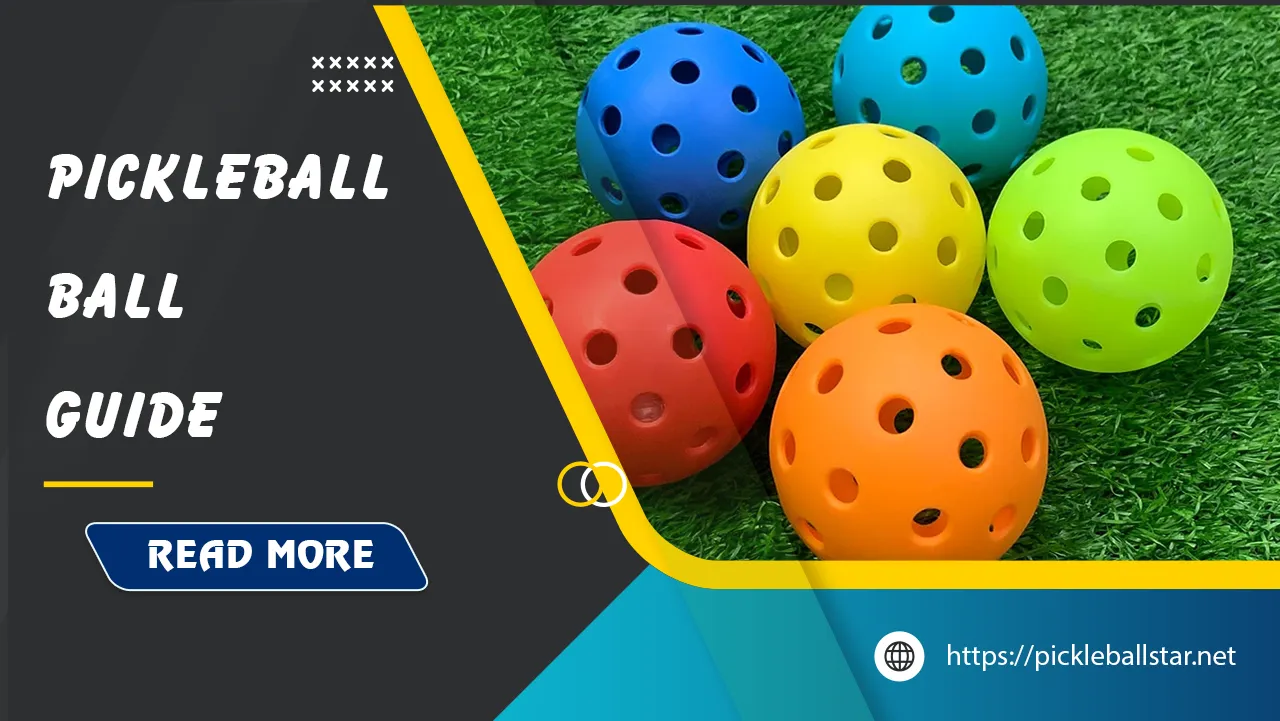
History of pickleball balls
Understanding the history of pickleball balls offers a fascinating glimpse into how this sport has evolved over the years. Initially, when pickleball was invented in the mid-1960s, players utilized wiffle balls. These balls, while accessible, were notoriously unpredictable due to their inconsistency in manufacturing quality.
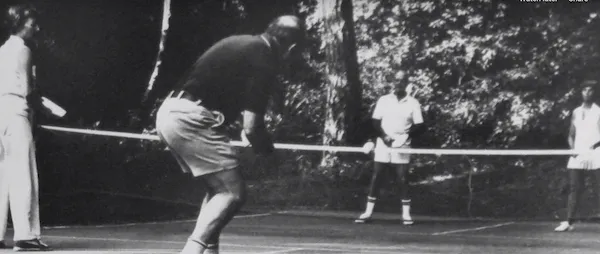
From the 1960s to the 1980s, the use of Cosom balls became popular, especially for indoor play. These were lightweight with a larger hole pattern (typically 26 holes), making them perform satisfactorily in indoor conditions. Yet, as the sport’s popularity surged, the need for more reliable, sturdy balls became evident.
Manufacturers then began creating pickleball-specific balls engineered to offer enhanced durability, consistency, and performance. The introduction of outdoor balls with a smaller (40-hole) pattern enabled better resilience against wind conditions. Today, pickleball balls come in a variety of materials and specifications, fine-tuned to cater to the diverse needs of players. Organizations like the USA Pickleball Association (USAPA) and the International Federation of Pickleball (IFP) regulate these specifications, ensuring fair play and a more enjoyable experience for enthusiasts.
Types of Pickleball Balls
When it comes to the sport of pickleball, players will encounter several types of balls, which can be categorized mainly into indoor and outdoor balls, as well as tournament-grade variants. The type of ball used can make all the difference in gameplay, influencing factors such as speed, bounce, and control.
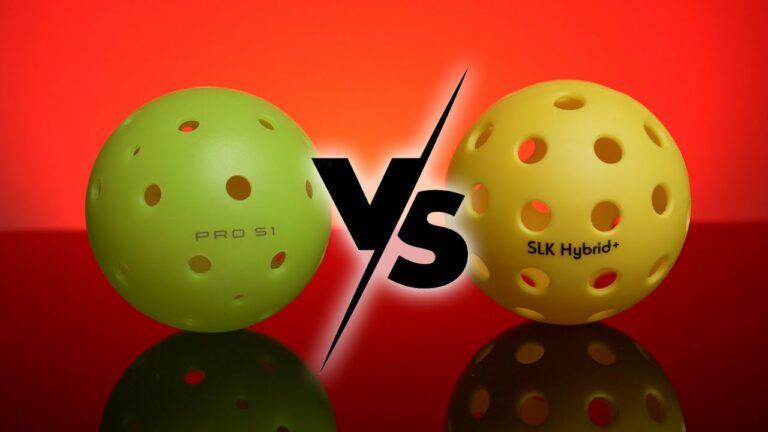
- Indoor Pickleball Balls: Generally made from softer plastic material, indoor balls are constructed to minimize drag and enhance control. They usually feature larger holes around 26 holes which result in a slower flight speed, making them perfect for indoor environments such as gyms where wind is not an issue.
- Outdoor Pickleball Balls: In contrast, outdoor balls typically consist of a firmer, more durable plastic and have smaller holes usually around 40. This design not only makes them more resistant to environmental conditions like wind but also allows for a higher bounce, facilitating aggressive gameplay.
- Tournament-Grade Balls: Specifically crafted to meet the standardized regulations set by the United States of America Pickleball Association (USAPA), tournament-grade balls are essential for competitive play. They pass rigorous testing to ensure consistency in size, weight, bounce, and hardness, thus making them reliable for official matches.
- Recreational Balls: Recreational balls cater to casual players and differ from tournament-grade balls in material and performance specs. They are designed to be user-friendly and enhance the overall joy of playing.
The following table provides a summary of each type of ball:
| Type | Material | Hole Size | Bounce | Use Case |
|---|---|---|---|---|
| Indoor Pickleball Balls | Softer plastic | ~26 | Lower | Indoor gyms/controlled areas |
| Outdoor Pickleball Balls | Harder plastic | ~40 | Higher | Outdoor courts |
| Tournament-Grade Balls | Strictly standard | Varies | Consistent | Competitive matches |
| Recreational Balls | Varies | Varies | Varies | Casual play |
Understanding these distinctions allows players to make informed decisions tailored to their distinct playing styles, enhancing both control and enjoyment of the game.
Indoor vs. Outdoor Balls
The choice between indoor and outdoor pickleball balls significantly influences a player’s experience on the court. Each type of ball is distinctly designed to cater to specific playing conditions, which greatly affects gameplay dynamics.
Indoor Balls are specifically crafted for use in controlled environments like gymnasiums. They are generally made from a softer plastic, which allows them to absorb impact better, minimizing the risk of injury. The larger holes (around 26) on indoor balls provide enhanced control, resulting in a slower and more predictable flight path. This is particularly beneficial for novice players who are still mastering their skills. The reduced bounce of indoor balls enables players to engage in more strategic and deliberate gameplay, emphasizing finesse over power.
On the flip side, Outdoor Balls are constructed from a firmer, more resilient plastic, designed to endure the harsher conditions found outside. These balls feature smaller holes (around 40), providing them with better aerodynamic qualities suitable for windy situations. The higher bounce characteristic of outdoor balls not only allows for aggressive strokes but also creates a fast-paced game that can often lead to exciting rallies. Such attributes make outdoor balls ideal for competitive settings but may pose challenges for beginners who might struggle with the speed and control they demand.
Thus, whether a player is engaging in spirited matches indoors or challenging conditions outdoors, selecting the appropriate ball fundamentally shapes their overall experience. Each environment offers its unique charms and challenges, and understanding the differences between these two types of pickleball balls is crucial for maximizing performance and enjoyment.
Tournament-Grade Balls
Tournament-grade balls are a cut above standard indoor or outdoor options, designed specifically for rigorous and competitive play. They are manufactured with precise specifications set by the United States of America Pickleball Association (USAPA) to ensure a uniform and reliable playing experience across various tournaments. High-quality materials and advanced production processes characterize these balls, making them ideal for those who are serious about pickleball.
A hallmark of tournament-grade balls is their consistency. They typically weigh around 2.8 ounces and have a standardized bounce height of 30 to 34 inches when dropped from a height of 78 inches. This guarantees that players can expect uniform performance in different matches, irrespective of the court or environmental conditions. Tournament-grade balls come in both indoor and outdoor varieties, with notable examples including the Dura Fast 40 and the Onix Pro range, which have garnered acclaim for their performance at the highest levels of play.
The distinctiveness of tournament-grade balls does not merely lie in their adherence to technical specifications, but also in the way they elevate the gameplay experience. Experienced players benefit from the reliable flight patterns and bounce characteristics, allowing for advanced strategies and skillful shot-making. Furthermore, they contribute to a fair competition landscape, where players rely on their skills rather than the unpredictability of variable quality.
In conclusion, investing in tournament-grade balls is essential for competitive players looking to optimize their performance. These balls are meticulously tested for accuracy and consistency, providing a solid foundation on which players can showcase their skills in any competitive setting.
Recreational Balls
When engaging in pickleball for fun, recreational balls serve an essential role, catering to casual players looking for a relaxed gaming experience. Designed with user-friendliness in mind, these balls differ significantly from tournament-grade variants, featuring softer materials and simplified designs that accommodate a variety of skill levels.
Recreational balls are available in both indoor and outdoor options, enabling players to choose depending on the conditions they plan to play in. Indoor recreational balls are typically softer, with larger holes that promote a controlled flight path. Conversely, outdoor recreational balls are made from more durable materials, allowing them to withstand the wear and tear of outdoor play while offering a high bounce for dynamic rallies.
One of the most appealing aspects of recreational balls is their accessibility. Brands like Franklin and Onix offer reliable choices that prioritize playability and enjoyment, making them excellent options for families, community gatherings, and informal get-togethers. Furthermore, recreational balls are often more affordable than their tournament-grade counterparts, allowing players to purchase multiple units for group activities without a significant financial burden.
These balls are instrumental in introducing new players to the sport, emphasizing the fun and social aspects of pickleball while helping players progressively develop their skills. Ultimately, recreational balls are the perfect supplement for casual play, encouraging participation, and inclusivity in this growing sport.
Specialized Balls for Specific Conditions
In addition to the standard categories of pickleball balls, there are also specialized options tailored for specific playing conditions or player needs. These balls provide certain enhancements in terms of performance, visibility, or adaptability, making them invaluable for various scenarios.
- Transition Balls: These hybrid balls combine features from both indoor and outdoor designs, offering an adaptable option for players who frequently switch between different court environments. Transition balls typically have a balanced performance profile that allows them to function efficiently in both settings.
- Weather-Resistant Balls: In regions where temperatures can drop significantly, specialized weather-resistant balls are available. They are engineered to maintain elasticity and performance even in cold conditions, reducing the risk of cracking or losing responsiveness during play.
- High-Visibility Balls: Aimed at enhancing visibility for players with difficulty tracking standard colors, these balls are often brighter and come in various high-contrast finishes. They assist players in maintaining focus during fast rallies and are particularly beneficial in busy or crowded environments.
- Noise-Reducing Balls: For indoor facilities that are sensitive to noise levels, these balls are specifically designed to reduce sound during play. Using innovative materials, they produce far less noise upon impact, making them perfect for environments such as community centers or schools.
By opting for these specialized balls, players can adapt to various conditions, enhancing their enjoyment and performance based on their specific circumstances. Whether it’s ensuring better visibility or maintaining performance in challenging weather, specialized pickleball balls can make all the difference.
Characteristics of Pickleball Balls
Understanding the key characteristics of pickleball balls is crucial for players looking to select the appropriate equipment for their unique gameplay scenarios. Each attribute plays a significant role in how the ball performs on the court, affecting everything from bounce to overall durability.
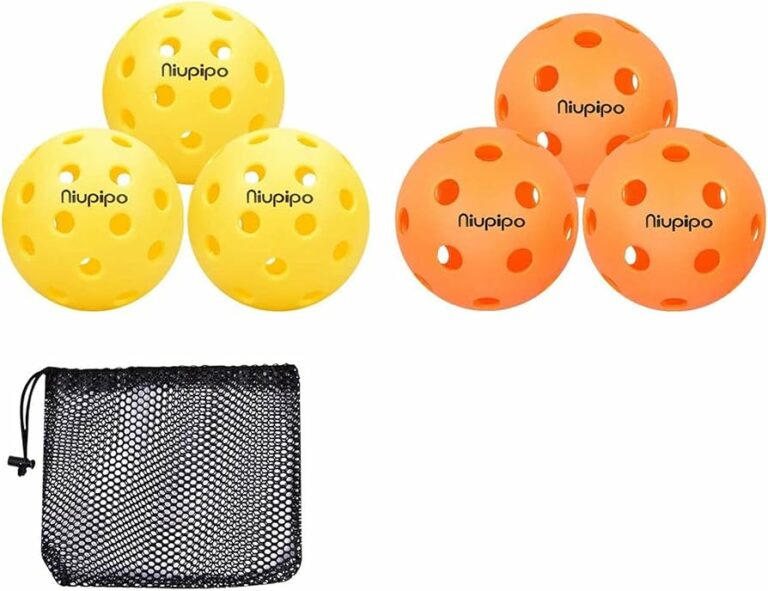
- Size Specifications: The official diameter of a pickleball measures between 2.874 inches (73 mm) and 2.972 inches (75.5 mm). This standardization is pivotal for ensuring consistent performance during play. In addition, the circumference must range from 9.029 inches (22.93 cm) to 9.337 inches (23.72 cm).
- Weight Considerations: Pickleball balls are regulated to weigh between 0.78 ounces (22 grams) and 0.935 ounces (26.5 grams). This weight range supports various playing conditions, allowing lighter balls for indoor play while accommodating heavier options for outdoor use that can withstand wind resistance.
- Material Composition: Most pickleball balls are constructed from hard plastic materials designed to maximize durability while still being lightweight. Common materials include polypropylene and similar durable plastics that provide the necessary elasticity for effective gameplay. These materials also contribute to a ball’s bounce and flight characteristics.
- Bounce and Flight Dynamics: Bounce is a critical measurement for pickleball balls. As per USAPA regulations, balls dropped from a height of 78 inches should bounce to a height between 30 and 34 inches. Balls crafted for outdoor play typically produce higher bounce characteristics compared to indoor options. Meanwhile, the aerodynamics of the ball, influenced by factors such as hole size and design, determines how the ball travels through the air, affecting overall gameplay dynamics.
By comprehending these attributes, players can identify the factors most critical to their performance and enjoyment. Each characteristic contributes to the unique experience that pickleball offers, allowing players to tailor their equipment to best suit their skills and objectives.
Size Specifications
The precise sizing of pickleball balls is critical to their performance and player experience. Adhering to specific dimensions contributes to game consistency and fairness, especially in competitive settings where players rely on standardized equipment.
The size specifications for pickleball balls are outlined as follows:
- Diameter: The official diameter must range between 2.874 inches (73 mm) and 2.972 inches (75.5 mm). These specifications help ensure that all balls conform to the same size, promoting fairness during competitive play.
- Circumference: The circumference is required to fall between 9.029 inches (22.93 cm) and 9.337 inches (23.72 cm). This metric is particularly important in regulating how the ball reacts upon impact, with players needing consistency in their interactions.
- Hole Count: Depending on their intended use, pickleball balls can feature between 26 and 40 holes. Indoor balls typically have 26 larger holes designed for improved control and softer play. In contrast, outdoor balls boast approximately 40 smaller holes, allowing for greater speed and durability against wind interference.
These specifications contribute to the overall dynamics of the game, wherein standard dimensions facilitate a consistent experience as players interact with the ball. Such uniformity is crucial, particularly in organized competitions, ensuring that everyone competes under identical conditions.
Weight Considerations
Another significant aspect of pickleball balls is their weight, which can directly influence how the ball behaves on the court. Proper weight is essential for optimizing performance and ensuring that players can execute strategies effectively.
The official weight range for pickleball balls is between 0.78 ounces (22 grams) and 0.935 ounces (26.5 grams). The following breakdown explains how weight affects play:
- Heavier Balls: Outdoor pickleball balls tend to weigh nearer to the higher end of this range. Heftier balls offer advantages in windy conditions, as their increased inertia helps them resist being pushed off course by gusts. This durability allows players to take more aggressive swings without losing control.
- Lighter Balls: Conversely, lighter balls often fall toward the lower end of the weight range. These options are particularly suited for indoor play, where fewer external influences such as wind factor into gameplay. Lighter balls allow for quicker reactions and less fatigue over longer play sessions, introducing players to strategic dimensions suited for slower-paced games.
- Player Preferences: Individual players may also have distinct preferences regarding the weight of their pickleball balls. Some players may favor the heavier feel for added control, while others may gravitate toward lighter options to facilitate faster play. Player comfort and confidence play essential roles in how weight affects overall performance.
In conclusion, selecting the appropriate weight for pickleball balls is crucial for optimizing player experience and performance. Understanding how weight impacts various playing conditions can assist players in making informed choices that enhance their gameplay strategies.
Material Composition
The material composition of pickleball balls is fundamental to their performance characteristics, including bounce, durability, and overall gameplay. Various materials contribute significantly to how the ball functions in both casual and competitive environments.
Most pickleball balls are constructed from durable, hard plastic materials, allowing them to withstand the high-impact nature of the game. The following points highlight key considerations associated with the material composition of pickleball balls:
- Common Materials: Manufacturers predominantly use polypropylene and other high-quality plastics designed specifically for elasticity and longevity. These durable materials provide the resilience necessary for outdoor play, allowing balls to withstand various environmental elements without compromising performance.
- Structural Properties: The choice of material affects the ball’s weight, bounce, and durability. High-density materials often lend themselves to superior bounce characteristics, allowing outdoor balls to respond predictably even in challenging conditions. Conversely, softer materials benefit indoor balls, offering a more controlled play experience reflective of the surfaces they are designed for.
- Cost Considerations: While higher-quality materials may lead to increased costs, they also ensure that players receive balls capable of enduring repeated use without significant wear. Cheaper materials may seem appealing initially; however, they can lead to diminished performance over time, necessitating more frequent replacements.
By selecting pickleball balls crafted from reliable materials, players can enhance both their skill development and overall enjoyment of the game. The right material blends durability with performance, creating an enjoyable experience on the court.
Bounce and Flight Dynamics
The bounce and flight characteristics of pickleball balls play a significant role in determining how players interact with them during the game. Understanding these dynamics is essential for developing effective strategies and enhancing gameplay.
- Bounce Characteristics: The USAPA mandates that when a pickleball is dropped from a height of 78 inches, it must bounce back to a height of 30 to 34 inches. This regulation ensures that players can expect a consistent response from the ball during matches. Balls designed for outdoor play tend to have firmer structures, leading to a higher bounce, while indoor balls often produce a lower bounce suited for controlled environments.
- Flight Dynamics: The flight characteristics of a pickleball are influenced by several factors, including the ball’s weight, material, and design. The number and size of holes also significantly impact how the ball moves through the air. Outdoor balls, for instance, typically have smaller holes (around 40), which reduce drag and improve aerodynamics, allowing them to maintain a steady flight trajectory regardless of windy conditions.
- Player Reactions: The way a ball bounces and its flight path can influence how players respond. A higher-bouncing ball may lead to aggressive strokes and quick action, while a lower bounce allows for strategic placements and slower-paced play. Understanding these dynamics helps players develop their techniques and adapt their strategies based on the conditions they face in match play.
Overall, the bounce and flight dynamics of pickleball balls are vital for a player’s performance. By recognizing the importance of these characteristics, players can better adapt their style and approach to maximize their effectiveness on the court.
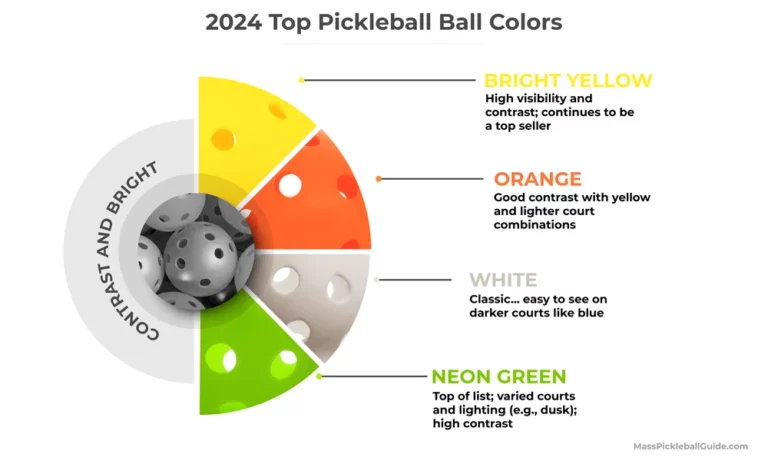
Popular Brands of Pickleball Balls
In the world of pickleball, the choice of ball can vary significantly based on brand, quality, and player preference. Certain brands have developed a reputation for producing top-notch pickleball balls that cater to both casual and competitive players.
- Franklin Sports: Known for their X-40 and X-26 balls, Franklin offers excellent options for outdoor and indoor play, respectively. Their outdoor X-40 balls are celebrated for their balance, durability, and enhanced bounce, while the X-26 is favored for its control and softer feel.
- Onix: The Dura Fast 40 from Onix is highly regarded within the competitive community for its consistent flight and responsiveness. This ball features a substantial 40-hole design providing excellent aerodynamics for outdoor play, making it a reliable choice for tournaments.
- Selkirk: With their Pro S1 ball, Selkirk focuses on maintaining flight consistency and durability. They are well-known for meeting tournament-grade specifications, ensuring that their balls can be utilized effectively in competitive matches.
- GAMMA: The Photon ball from GAMMA is renowned for its visibility and consistent bounce, making it appealing to a wide range of skill levels. It has gained popularity in both recreational and competitive settings due to its performance capabilities.
- Vulcan Sports: Gaining traction in recent years, the Vulcan VPro Flight prioritizes speed and responsiveness, demonstrating innovation through design. The brand has become increasingly popular within professional leagues looking for reliable performance.
- PCKL: This emerging brand offers a variety of outdoor balls known for their vibrant colors and tough construction, targeting players looking for eye-catching designs without sacrificing quality.
These brands each offer unique options tailored to specific playing conditions, reinforcing the importance of selecting the right ball for one’s needs.
USAPA-Approved Brands
In competitive pickleball, the United States Pickleball Association (USAPA) stands as the governing body that maintains standards for sanctioned tournaments. Selecting balls from USAPA-approved brands is paramount for ensuring compliance and performance consistency.
- Franklin: The brand’s X-40 and X-26 balls have gained acceptance in numerous tournaments, meeting USAPA criteria while proving reliable through rigorous competition.
- Onix: The Dura Fast 40 has been positively reviewed for meeting high-performance standards, making it favored by players participating in competitive circuits.
- Vulcan: The VPro Flight has also become a favorable choice in professional leagues, highlighting its efficient design and durability in demanding conditions.
- Selkirk: The Pro S1 ball carries USAPA approval, ensuring it meets the specifications for both competitive and recreational play across varying skill levels.
Using USAPA-approved brands not only guarantees compliance during official matches but also instills confidence in players, allowing them to focus fully on their performance rather than potential equipment issues.
Top Choices for Indoor Play
Indoor pickleball presents a wholly unique set of playing conditions, necessitating specific types of balls that excel in controlled environments. Here are some of the top choices for indoor play that have become favorites among players:
- Onix Fuse G2: This ball is highly celebrated for its durability and consistent bounce. Its composition allows for effective control, complemented by its 26 precision-molded holes. The G2 features a superior seamless design, making it particularly well-suited for indoor tournaments by ensuring performance during intense matches.
- Gamma Photon: Known for being faster and stiffer, this ball is also favored for its high visibility. Designed with 26 precision molded holes and USAPA-approved, it offers a unique playing experience but may show wear more quickly due to its stiff nature.
- Juggs Sports Pickleballs: Particularly popular among novice players, these balls are soft in design and provide a slower flight path, making them approachable for individuals new to the game. They have been crafted to maximize enjoyment in less competitive settings.
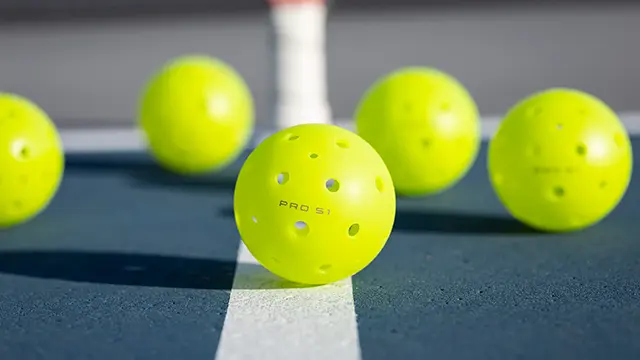
Ultimately, the right choice of ball can significantly enhance enjoyment and player development in indoor play, contributing to a fulfilling pickleball experience.
Best Options for Outdoor Play
Outdoor pickleball balls must withstand the challenges posed by natural elements while maintaining performance standards. Here are some of the best options for outdoor play, catering to both casual and competitive environments:
- Franklin X-40: Often recommended for outdoor recreational play, the Franklin X-40 offers a great balance of speed and control. Its one-piece seamless design provides both visibility and durability; however, it has been noted to crack under extreme cold conditions, so players should consider the temperature when using it.
- Onix Dura Fast 40: Renowned for its suitability in competitive play, the Dura Fast 40 is built with speed and responsiveness in mind. This ball adheres to strict USAPA standards, contributing to its popularity among serious players competing in outdoor tournaments.
- PCKL Elite 40: This ball is noted for its high-speed performance and slight durability advantage over some opposing options for outdoor play. Whether individuals engage in casual games or tournaments, the PCKL Elite 40 proves itself capable of meeting demands.
- Onix Pure 2: Differing from other outdoor options, the Onix Pure 2 is designed to withstand colder temperatures. This feature allows the ball to maintain performance in harsher weather conditions, providing a more consistent playing experience regardless of the elements.
Ultimately, personal preferences and playing styles will dictate which outdoor ball is most suitable. These options cater to varying needs, from recreational play to competitive tournaments, offering players the chance to excel beyond the court boundaries.
Regional Variations in Ball Brands
Brand preference in pickleball can exhibit considerable regional variations, highlighting how local communities and players gravitate toward specific equipment based on availability, performance, and even cultural influences.
In many areas across the United States, brands such as Franklin and Onix dominate due to their longstanding reputation and dependability in competitive play. Yet, regional preferences may shift based on external factors:
- Cold Weather Regions: Players in colder climates often prefer balls like the Onix Pure 2, which withstands the effects of lower temperatures effectively while maintaining its performance.
- Hot Weather Regions: In warmer regions, players may favor the Dura Fast 40 or X-40 versions for their performance in heat. Both offer durability and consistent bounce, appealing to players engaged in extended matches under the sun.
- Emerging Brands: Likewise, newer brands like Vulcan have begun to carve out a niche across various regions, often appealing to younger or more competitive players seeking state-of-the-art performance.
Evolving preferences will often result from local tournaments, online communities, and access to specific brands, creating a spectrum of choices based on regional influences. In doing so, pickleball brings together athletes from varied backgrounds, fostering sporting camaraderie around the shared passion for the game.
Maintenance and Care for Pickleball Balls
Caring for pickleball balls can significantly extend their lifespan and ensure optimal performance on the court. Proper maintenance not only protects the investment in equipment but also enhances the overall gameplay experience.
- Regular Cleaning: Pickleball balls should be cleaned regularly to remove dirt, scuff marks, and impurities that may accumulate during play. A simple solution of warm soapy water can effectively cleanse the surface. Rinse thoroughly and let them air dry before storage.
- Storage Recommendations: Store pickleball balls in a cool, dry place away from direct sunlight and extreme temperatures. Utilizing breathable containers promotes air circulation, preventing moisture buildup and degradation of materials.
- Lifespan and Replacement Guidelines: Be vigilant regarding the signs of wear, such as cracks, deformation, or loss of bounce, as these indicate that it may be time to replace the balls. Regular inspection aids in timely replacement, ensuring top performance during play.
- Impact of Weather on Ball Durability: Weather significantly affects the longevity of pickleball balls. In hot weather, materials can soften or warp, while cold conditions can render them brittle and prone to breaking. Players should consider these factors when choosing balls based on their environment.
By practicing effective maintenance and care, players can maximize their enjoyment and performance in the sport of pickleball while protecting their investment in equipment.
Cleaning Practices
Cleaning pickleball balls entails a simple yet effective process that helps maintain their performance and longevity. Here’s a step-by-step guide to proper cleaning:
- Preparation of Cleaning Solution: Mix warm water with a few drops of mild soap in a bucket or large bowl to create a gentle cleaning solution. Avoid harsh chemicals that could damage the plastic surface of the balls.
- Soaking the Balls: Submerge the pickleball balls in the soapy water, allowing them to soak for several minutes. This soaking helps loosen dirt, debris, and scuff marks that may have accumulated during play.
- Scrubbing the Balls: After soaking, use a soft cloth or sponge to gently scrub the surface of each ball. Pay special attention to any areas with visible marks or stains, ensuring a thorough cleaning without damaging the surface.
- Rinsing and Drying: Rinse the balls with clean water to remove any soap residue. After rinsing, allow the balls to air dry completely before storing them, as moisture can lead to mold or degradation of materials over time.
Following these cleaning practices helps maintain the balls in optimal condition, prolonging their playable life and enhancing your experience during games.
Storage Recommendations
Effective storage of pickleball balls is essential in maintaining their integrity and ensuring long-term performance. Below are key storage recommendations to consider:
- Keep Away from Extreme Temperatures: Store pickleball balls in cool, dry locations. Avoid exposing them to high temperatures or direct sunlight, as prolonged heat can alter the ball’s performance features, leading to premature wear.
- Use a Storage Container: Incorporate breathable containers, such as mesh bags or perforated boxes, to store the balls. This approach helps prevent moisture accumulation while allowing for air circulation, minimizing the risk of degradation.
- Maintain Proper Inflation: If using inflatable balls, check their inflation levels regularly. Ensuring that the balls are adequately inflated contributes to effective bounce, while under-inflated balls may dampen performance and control.
- Organize by Type: If you own multiple types of balls, consider organizing them within your storage container. Group indoor and outdoor balls separately for easy access during play, ensuring that you have the right equipment for various environments.
By adhering to these storage recommendations, players can promote the longevity of their pickleball balls while appreciating the performance advantages that come with utilizing well-maintained equipment.
Lifespan and Replacement Guidelines
The lifespan of pickleball balls can vary significantly based on several influencing factors such as material composition, frequency of use, and storage conditions. Here’s a breakdown of guidelines regarding lifespan and replacement protocols:
- Material Composition: Balls made for outdoor play are typically more durable due to thicker walls and higher-quality materials. Conversely, indoor balls may wear out more quickly since they are designed for controlled environments where softer plastic is used.
- Frequency of Use: Regularly played pickleball balls will experience wear and tear more quickly than those used sporadically. Players engaging in frequent games should be prepared to replace their balls more often, while casual participants may find their equipment lasting longer.
- Age of the Ball: As a general rule of thumb, pickleball balls should be replaced every few months, especially if they start showing signs of deterioration. Key indicators for replacement include visible cracks, deformation leading to irregular shape, loss of bounce that makes the ball feel flat, or discoloration from prolonged absorption of moisture or exposure to the elements.
- Signs of Wear: Stay vigilant for the following signs that indicate a pickleball ball needs replacement:
- Deformation, including flat spots or irregular shapes.
- Visible fractures or dents, which compromise performance.
- Loss of bounce, making the ball feel flat and less responsive.
- Discoloration resulting from aging or exposure to elements.
By proactively managing the lifespan and replacement of pickleball balls, players can ensure optimal performance, enhance their skills, and enjoy the sport to its fullest extent.
Impact of Weather on Ball Durability
Weather conditions can have a profound effect on the performance and durability of pickleball balls, influencing how they react during play. Here’s an overview of how weather conditions can impact your equipment:
- Temperature Effects:
- Hot Weather: Under high temperatures, plastic materials may soften, leading to decreased bounce and a less responsive feel during play. The material could also absorb heat, altering its structural integrity over time.
- Cold Weather: In colder weather, the hardening of the materials can occur, affecting the elasticity of the ball. A brittle ball may crack or lose responsiveness, making handling and control more difficult for players.
- Humidity:
- High humidity levels can lead to moisture absorption by the balls, affecting weight and ultimately bounce. Conversely, low humidity can cause balls to become more brittle, increasing cracking risk for outdoor options used in arid climates.
- Wind: Windy conditions can alter the trajectory of the ball, challenging players to adjust their strategies and shot-making. Outdoor balls are designed to manage wind better due to their firmer structure, but strong gusts will still impact gameplay.
By recognizing the impact of weather on ball durability, players can adapt their choices and strategies to ensure the best possible performance. Understanding the relationship between equipment and conditions allows pickleball enthusiasts to maintain focus during play, regardless of external factors.
FAQs
What is the standard size and weight of a pickleball ball?
The official size of a pickleball ball is between 2.874 and 2.972 inches in diameter, and its weight ranges from 0.78 to 0.935 ounces.
How do indoor and outdoor pickleball balls differ?
Indoor pickleball balls have 26 larger holes, are generally lighter, and are constructed from softer plastic. Outdoor pickleball balls feature 40 smaller holes, are heavier, and are made from harder, more durable plastic to withstand the elements and rough court surfaces.
How often should I replace my pickleball balls?
Replacement frequency depends on usage. Heavy, frequent play may necessitate replacements every few weeks, especially for competitive players. Conduct regular visual inspections for any signs of wear, such as cracks or loss of bounce, to determine when to replace the balls.
Can I use the same ball for indoor and outdoor play?
While it’s possible, it is not recommended. Indoor and outdoor balls are optimized for their respective environments. Indoor balls provide better control on smooth surfaces,while outdoor balls are designed to be stable against winds and on rougher surfaces. Using the wrong type of ball can negatively impact your game.
How do I clean and maintain my pickleball balls?
Clean your pickleball balls by wiping them with a damp cloth after each session to remove dirt and sweat. Store them in a cool, dry place, away from direct sunlight and extreme temperatures. Use breathable containers to prevent moisture buildup, and regularly inspect and replace worn or damaged balls.
Does the color of the pickleball ball matter?
Yes, the color of the pickleball ball matters for visibility on the court. Yellow is the most common color due to its high visibility in various lighting conditions. However, white and green are also acceptable, with white often used for indoor play and darker courts, while green can be versatile for both indoor and outdoor play.
Conclusion
Understanding the intricacies of what kind of ball is used in pickleball is crucial for players who aspire to enhance their game. From the various types indoor, outdoor, tournament-grade, recreational, and specialized balls to the characteristics that influence their performance, this knowledge allows players to make informed decisions tailored to their skill level and playing conditions. Selecting from reputable brands that meet USAPA standards not only ensures quality but also fosters competitiveness and fair play.
Moreover, implementing effective maintenance practices and understanding the impact of weather can extend the lifespan of pickleball balls, improving the overall experience. By investing time in caring for their equipment and understanding the dynamics of different ball types, players can optimize their performance and enjoyment on the court.
In essence, whether one is a budding enthusiast or a seasoned competitor, the right ball significantly enhances the engagement and excitement of the sport. Therefore, embracing the unique attributes of each type of pickleball ball can transform the game into a more enjoyable and fulfilling experience for everyone involved.
